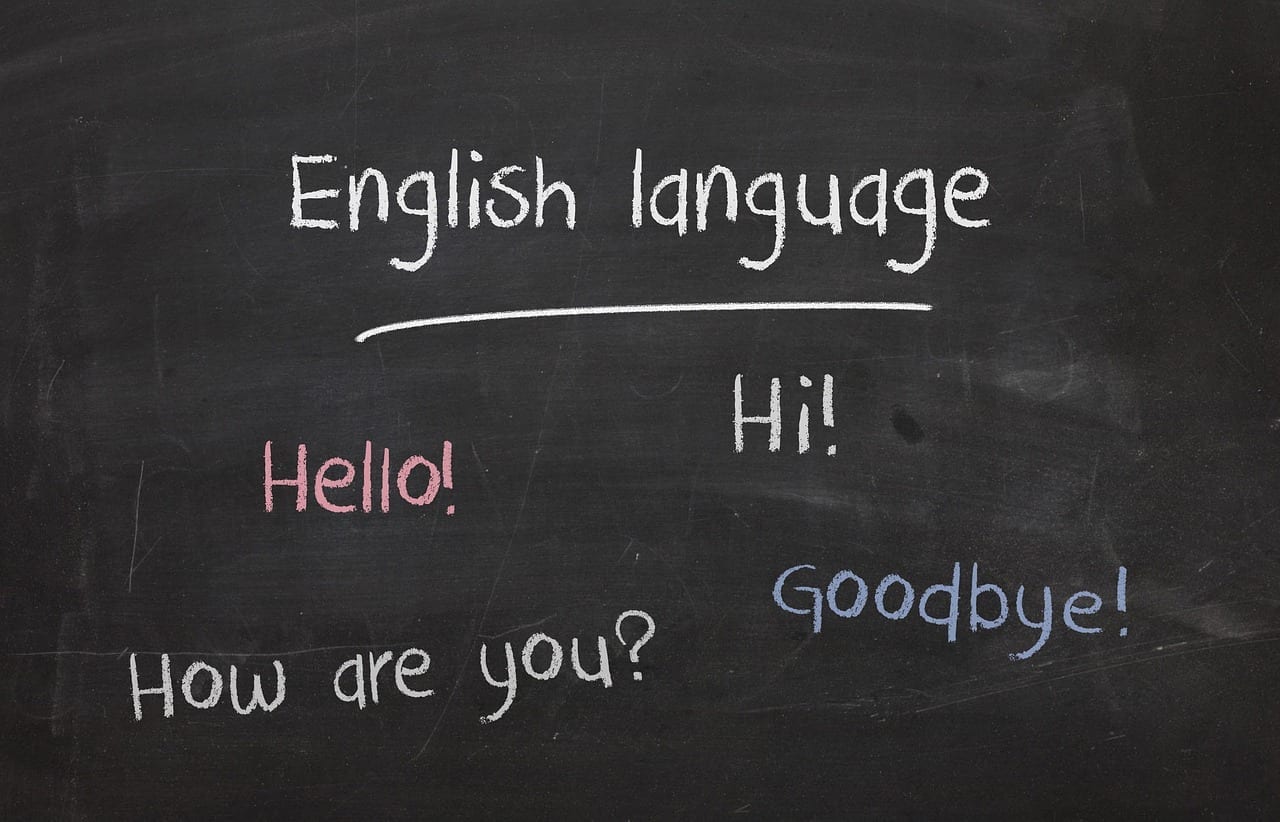35 ChatGPT Prompts for High-Quality Translation
Crafting effective ChatGPT prompts for translation ensures that your multilingual AI-generated communications are high-quality, culturally relevant, and tailored to specific needs. As translation industry veterans, we know firsthand how AI tools like ChatGPT can improve translation workflows. However, success with Generative AI (GenAI) depends on how well you communicate with it. Communicating with ChatGPT for translation Powered by advanced LLM (Large Language Model) technology, OpenAI’s ChatGPT is trained on massive datasets to understand and generate human-like text. This allows it to analyze context, tone, and cultural nuances, delivering nuanced, accurate translations that adapt to your specific needs. To get the best translation results from ChatGPT, it's important to craft clear, specific, and purposeful prompts. While there are both pros and cons of using ChatGPT for translation, it’s an impressive tool–especially when used properly. These tips below will help you effectively prompt ChatGPT for translation, reducing misunderstandings and ensuring high-quality outputs (and saving time). 35 best ChatGPT prompts for translation and why The following 35 AI translation prompts were developed by a translation specialist to help you unlock the full potential of ChatGPT for translations. Each one focuses on achieving accuracy, relevance, and customization for your specific needs. 1. Assign ChatGPT specific roles or expertise Set ChatGPT’s role to ensure outputs align with professional expectations. Prompt example: “Act as a professional English-Spanish translator specializing in the energy sector.” Why this works: Assigning a clear role ensures ChatGPT outputs align with industry standards, terminology, and context. 2. Avoid generic translation prompts for ChatGPT Provide detailed instructions to avoid ambiguity. Generic prompts like “Translate this into Spanish” often miss key nuances. Instead, specify region, tone, and audience. Prompt Example: “Translate this into Latin American Spanish, targeting an Argentine audience with a formal tone suitable for an oil and gas industry report.” Why: Detailed instructions help ChatGPT tailor the translation to the specific cultural, professional, and linguistic context, ensuring high-quality translations and relevance. 3. Specify tone or style Clarify tone or style to match the audience’s expectations. Prompt example: “Translate this text into Argentine Spanish, keeping a friendly and approachable tone suitable for social media content.” Why: Tone impacts how the translation is perceived by the target audience. 4. Provide context, field, and region Define the purpose of your translation to achieve more relevant results. Prompt example: “Translate this technical manual into Mexican Spanish using PEMEX’s official terminology and maintain a formal tone.” Why this works: Context helps reduce ambiguity and improves translation quality. 5. Leverage reference materials and glossaries Boost accuracy with bilingual glossaries and reliable resources. Prompt example: Why this works: Supplying glossaries or links will ensure consistent terminology use during translation. 6. Clarify acronyms Ensure ChatGPT handles abbreviations correctly for the target audience. Prompt example: “What does the acronym ‘LNG’ stand for, and is there an accepted Spanish equivalent in the energy industry?” Why: Being clear about acronyms and industries avoids misinterpretation in technical fields. 7. Check language accuracy based on rules Ask ChatGPT to follow official grammar and style guides. Prompt example: “Review this translation according to the grammatical and spelling rules of the ‘Real Academia Española’ and recommendations from ‘Fundéu’.” Why: Following established rules ensures professional-level translations and linguistic precision. 8. Localize idioms Adapt idiomatic expressions for cultural relevance. Prompt example: "How would a United States English speaker say 'Más vale pájaro en mano que cien volando'?" Why: Literal translations of idioms often fail; localization keeps them meaningful. 9. Localize slang Ensure slang is culturally accurate and context-appropriate. Prompt example: “What does ‘spill the tea’ mean in US English, and is there an equivalent expression in Argentine Spanish?” Why: Slang differs by region, so localization maintains authenticity. 10. Adjust measurements and date formats Adapt content for regional usability. Prompt example: “Adapt this technical report to use Argentine measurement units and date formats (DD/MM/YYYY).” Why: Adjustments improve readability and usability for specific regions and the target audiences. 11. Request reviews or revisions with specific criteria Refine translations by asking for targeted feedback. Prompt example: “Please review this transla

Crafting effective ChatGPT prompts for translation ensures that your multilingual AI-generated communications are high-quality, culturally relevant, and tailored to specific needs. As translation industry veterans, we know firsthand how AI tools like ChatGPT can improve translation workflows.
However, success with Generative AI (GenAI) depends on how well you communicate with it.
Communicating with ChatGPT for translation
Powered by advanced LLM (Large Language Model) technology, OpenAI’s ChatGPT is trained on massive datasets to understand and generate human-like text. This allows it to analyze context, tone, and cultural nuances, delivering nuanced, accurate translations that adapt to your specific needs.
To get the best translation results from ChatGPT, it's important to craft clear, specific, and purposeful prompts. While there are both pros and cons of using ChatGPT for translation, it’s an impressive tool–especially when used properly.
These tips below will help you effectively prompt ChatGPT for translation, reducing misunderstandings and ensuring high-quality outputs (and saving time).
35 best ChatGPT prompts for translation and why
The following 35 AI translation prompts were developed by a translation specialist to help you unlock the full potential of ChatGPT for translations. Each one focuses on achieving accuracy, relevance, and customization for your specific needs.
1. Assign ChatGPT specific roles or expertise
Set ChatGPT’s role to ensure outputs align with professional expectations.
Prompt example:
“Act as a professional English-Spanish translator specializing in the energy sector.”
Why this works: Assigning a clear role ensures ChatGPT outputs align with industry standards, terminology, and context.
2. Avoid generic translation prompts for ChatGPT
Provide detailed instructions to avoid ambiguity. Generic prompts like “Translate this into Spanish” often miss key nuances. Instead, specify region, tone, and audience.
Prompt Example: “Translate this into Latin American Spanish, targeting an Argentine audience with a formal tone suitable for an oil and gas industry report.”
Why: Detailed instructions help ChatGPT tailor the translation to the specific cultural, professional, and linguistic context, ensuring high-quality translations and relevance.
3. Specify tone or style
Clarify tone or style to match the audience’s expectations.
Prompt example:
“Translate this text into Argentine Spanish, keeping a friendly and approachable tone suitable for social media content.”
Why: Tone impacts how the translation is perceived by the target audience.
4. Provide context, field, and region
Define the purpose of your translation to achieve more relevant results.
Prompt example:
“Translate this technical manual into Mexican Spanish using PEMEX’s official terminology and maintain a formal tone.”
Why this works: Context helps reduce ambiguity and improves translation quality.
5. Leverage reference materials and glossaries
Boost accuracy with bilingual glossaries and reliable resources.
Prompt example:
Why this works: Supplying glossaries or links will ensure consistent terminology use during translation.
6. Clarify acronyms
Ensure ChatGPT handles abbreviations correctly for the target audience.
Prompt example:
“What does the acronym ‘LNG’ stand for, and is there an accepted Spanish equivalent in the energy industry?”
Why: Being clear about acronyms and industries avoids misinterpretation in technical fields.
7. Check language accuracy based on rules
Ask ChatGPT to follow official grammar and style guides.
Prompt example:
“Review this translation according to the grammatical and spelling rules of the ‘Real Academia Española’ and recommendations from ‘Fundéu’.”
Why: Following established rules ensures professional-level translations and linguistic precision.
8. Localize idioms
Adapt idiomatic expressions for cultural relevance.
Prompt example:
"How would a United States English speaker say 'Más vale pájaro en mano que cien volando'?"
Why: Literal translations of idioms often fail; localization keeps them meaningful.
9. Localize slang
Ensure slang is culturally accurate and context-appropriate.
Prompt example:
“What does ‘spill the tea’ mean in US English, and is there an equivalent expression in Argentine Spanish?”
Why: Slang differs by region, so localization maintains authenticity.
10. Adjust measurements and date formats
Adapt content for regional usability.
Prompt example:
“Adapt this technical report to use Argentine measurement units and date formats (DD/MM/YYYY).”
Why: Adjustments improve readability and usability for specific regions and the target audiences.
11. Request reviews or revisions with specific criteria
Refine translations by asking for targeted feedback.
Prompt example:
“Please review this translation as a native Mexican Spanish speaker and adjust any phrases to ensure they sound natural and localized.”
Why this works: Targeted reviews improve accuracy and quality of the translation.
12. Confirm understanding before starting
Minimize errors by verifying ChatGPT understands your instructions.
Prompt example:
“I need you to translate multiple legal texts into Mexican Spanish following these guidelines: [Insert specifications]. Please confirm if everything is clear before we begin.”
Why this works: Confirming prevents miscommunication and ensures alignment and setting proper expectations.
13. Control text length (language growth)
Maintain character limits during translation for subtitles or design constraints.
Prompt example:
“Translate this video script into Mexican Spanish, maintaining the same character count for subtitling purposes.”
Why: Some content, like subtitles or ads, requires precise length control.
14. Create a translation style guide
Standardize tone, terminology, and formatting for future projects.
Prompt example:
“Based on this sample translation, create a style guide outlining preferences for tone, formality, terminology, punctuation, and formatting for future projects.”
Why: Style guides ensure consistency across all translations, especially for ongoing projects.
15. Identify potential cultural misunderstandings
Highlight phrases that may not resonate with the target audience.
Prompt example:
“Review this translation and highlight any phrases, idioms, or references that might cause cultural misunderstandings for a Mexican audience.”
Why: Avoiding cultural missteps ensures your text is well-received. This helps ensure the final text is culturally appropriate and avoids unintended offense.
16. Translate with SEO optimization
Optimize translations for search engines.
Prompt example:
“Translate this blog post into Mexican Spanish, ensuring SEO optimization. Use the following keywords: [list keywords]. Adapt headers and meta descriptions.”
Why: SEO-optimized translations can help content rank well in target markets. However, do not overly rely on ChatGPT for SEO, as that can negatively impact the success of your content in search engines and with readers.
17. Reverse translation (back translation)
Verify accuracy by translating back to the original language.
Prompt example:
“Please back-translate this Mexican Spanish text into English, staying as literal as possible without interpreting the meaning.”
Why this works: Back-translation highlights potential errors or misinterpretations. Back-translation is often used in medical or legal translations to verify accuracy and detect errors.
18. Iterative collaboration
Refine outputs by requesting incremental changes.
Prompt example:
“Please simplify version 2,” or “Can you make version 1 more engaging?”
Why this works: Iterative feedback helps improve quality and tailor translation results.
19. Use positive instructions
Frame your prompts positively to achieve better results.
Instead of: "Do not use informal language."
Use: “Please, maintain a formal tone throughout the translation.”
Why this works: Positive prompts yield better AI responses by reducing ambiguity and emphasizing the desired outcome.
20. Clarify the intent of the translation
Specify the goal or purpose of the translation to guide word choice and tone.
Prompt example:
“Translate this text into marketing copy for Mexican Spanish. The goal is to appeal to middle-income families with children aged 8-15.”
Why: Defining the intent shapes the style, tone, and word choice to fit the target audience and purpose.
ChatGPT excels at assisting with specific translation tasks. Use these next 15 prompts to enhance workflow, improve consistency, and tackle creative challenges.
21. Request multiple versions of a translation
Ask for multiple versions to compare tone or style. Use the diverse outputs to choose from or refine further.
Prompt example:
“Translate this text into Mexican Spanish and provide two versions: one formal and one casual.”
Why this works: Having multiple options allows for better customization. This allows comparison, synonym selection, and stylistic adjustment.
22. Use clear delimiters for text segments
Avoid confusion when submitting multiple texts.
Why: Clear boundaries prevent errors in complex translations with multiple texts or segments.
23. Create and apply glossaries
Preserve consistent terminology across translations.
Prompt example 1:
“Create a bilingual glossary from this technical text in English and its Spanish translation.”
Prompt example 2:
"Translate this text using the attached glossary. Prioritize glossary terms and avoid synonyms unless specified."
Why: Glossaries improve uniformity in terminology-heavy projects. Maintain consistent terminology across all translations.
24. Specify the area or industry
Use domain-specific vocabulary for technical accuracy.
Prompt example:
“Translate this text into Mexican Spanish, ensuring consistency with oil and gas industry terminology, particularly for contracts.”
Why: Specialized vocabularies are critical for professional translations.
25. Adapt creative content
Maintain artistic and cultural integrity in creative translations.
Prompt example:
“Translate this song into Mexican Spanish, preserving the meter, rhyme, and imagery. Provide explanations for any significant changes made.”
Why: Creative content requires a balance between fidelity and artistry.
26. Use image input for object translation
Identify objects in visual references for accurate terminology.
Prompt example:
“Please identify and provide English and Mexican Spanish names for the parts of the machine shown in this image.”
Why: Images help clarify context that text alone might miss.
27. Extract terminology from videos
Generate a list of key terms from video content.
Prompt example:
“List key technical terms from this oil and gas video, provide their Mexican Spanish equivalents, and include brief definitions.”
Why: Extracted terms support accuracy in multimedia projects. This also ensures clarity in domain-specific terminology.
28. Specify output format
Request structured translations for specific applications.
Prompt example:
“Provide a table with English terms, Mexican Spanish equivalents, and Argentine Spanish equivalents in Excel format.”
Why: Organized formats save time and are easier to reference.
29. Adapt a text for voice-over purposes
Adjust translations to match voice-over timing and fluency.
Prompt example:
“Adapt this script for voice-over in Mexican Spanish. Keep the same meaning but ensure the translated text fits the timing of the original English audio.”
Why: Voice-over requires precision to fit time constraints while maintaining the meaning and fluency.
30. Verify terminology consistency across a document
Check for consistency in long or technical texts.
Prompt example:
“Please review this technical translation and check if the terminology is consistent throughout the document. Flag any inconsistencies and suggest corrections.”
Why: Terminology consistency ensures quality and professionalism, especially in long or collaborative projects.
31. Summarize a source text
Condense content into key points.
Prompt example:
“Summarize this technical document in Spanish, keeping only the key points. Make it concise and suitable for a professional audience.”
Why: Summaries save time for stakeholders who need a quick understanding without the full translation.
32. Paraphrase a complex passage
Simplify dense content without losing meaning.
Prompt example:
“Paraphrase this complex legal paragraph into clearer, more accessible Spanish while preserving its original meaning.”
Why: Simplified text is easier for general audiences to understand. However, these documents need to maintain precision, especially for technical and legal documents.
33. Proofread a machine translation output
Post-editing machine translations is a growing task for professional translators. Use ChatGPT to polish machine translations to improve quality and cutdown time.
Prompt example:
“Proofread this machine-translated text into Spanish. Correct grammar, syntax, and terminology errors, and improve readability while maintaining the original meaning.”
Why: Post-editing ensures accuracy and readability.
34. Transcreate for marketing purposes
Preserve the impact of marketing messages in translation. When working with slogans, songs, or ads, ask for culturally relevant and emotionally impactful translations.
Prompt example:
“Transcreate this advertisement slogan into Mexican Spanish. Maintain its emotional impact and cultural relevance while keeping it concise and memorable. Provide two versions and explain your choices.”
Why: Marketing requires emotional and cultural resonance. Therefore, marketing translations often require creativity to preserve the intended effect while adapting to cultural contexts
35. Request reference materials
Ask ChatGPT for reliable terminology resources.
Prompt example:
“Please provide a list of reliable terminology resources for the Mexican oil and gas industry.”
Why: Empowers translators or yourself using ChatGPT by requesting additional tools. Domain-specific resources ensure higher translation accuracy.
An example of how the Pairaphrase ChatGPT integration provides a list of reliable terminology resources, such as PEMEX and the Mexican Petroleum Institute, to ensure accurate and industry-specific translations for the Mexican oil and gas sector.
Conclusion:
Crafting effective prompts is key to maximizing ChatGPT’s capabilities in translation. By providing clear context, specifying tone and audience, and leveraging tools like glossaries and style guides, users can achieve high-quality, culturally appropriate, and industry-specific translations. These best practices not only enhance translation accuracy but also streamline workflows and improve communication across languages.
Source: This blog was originally published at pairaphrase.com
































/https://tf-cmsv2-smithsonianmag-media.s3.amazonaws.com/filer_public/82/94/82942bb2-58d4-487f-bcd8-2d1959082822/gettyimages-186481784_web.jpg?#)
/https://tf-cmsv2-smithsonianmag-media.s3.amazonaws.com/filer_public/4c/fe/4cfe0cff-c116-4e48-bed7-8bec4439598d/main_barry_arm_pws_may-2020_web.jpg?#)
/https://tf-cmsv2-smithsonianmag-media.s3.amazonaws.com/filer_public/8e/17/8e174f75-8c72-41b1-bf16-b7dd76557c54/smithmag-podcast-s03-ep05-bees-article.jpg?#)








































